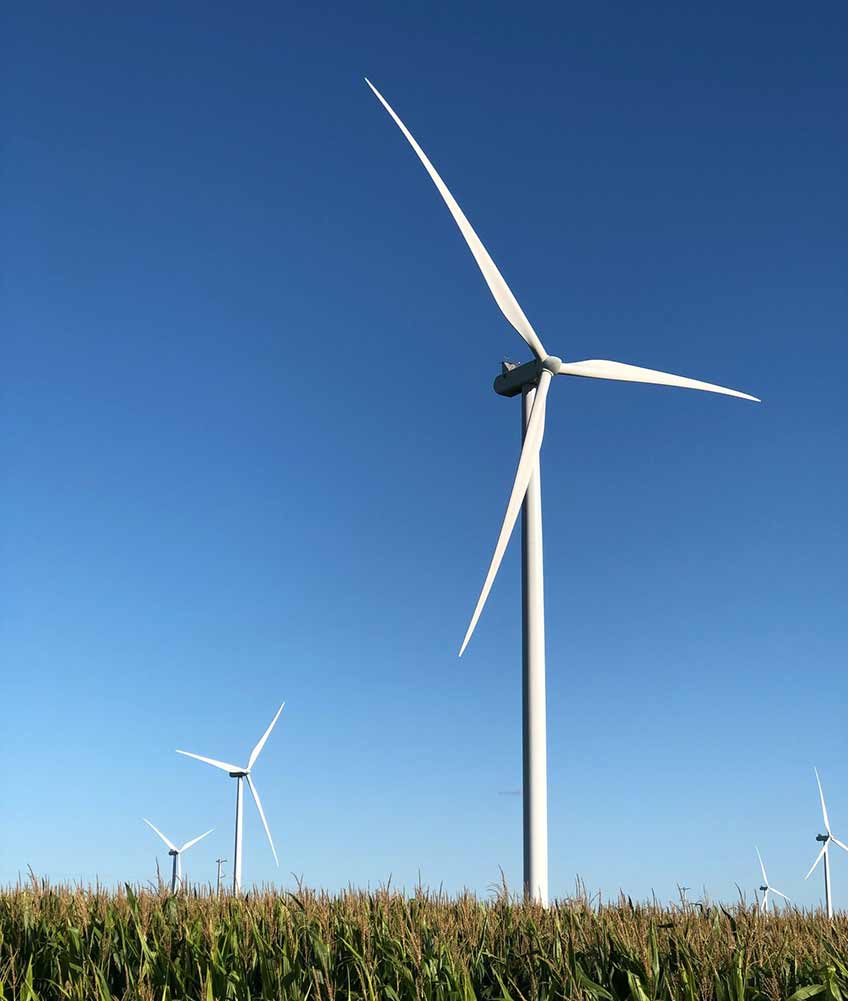When Wind Sweeps into Communities
Open Dialogue, Perceptions of Fairness Help Welcome Wind Neighbors
Wind farm development in the United States often takes place in rural areas with land that is largely the property of farmers and ranchers who lease their land to developers. By the end of 2018, wind energy contributed 6.5% of the nation’s electricity supply, with more than 30% in three states—Iowa, Kansas, and Oklahoma. With wind power capacity additions projected to continue growing, rural residents often wonder how wind energy will impact their communities. More to the point, they are interested to know if wind will be a good neighbor.
To help answer this question, researchers conduct community outreach and research to understand how wind energy development affects those living nearby. In a recent article co-authored by NREL researcher Eric Lantz titled, “Attitudes of U.S. Wind Turbine Neighbors: Analysis of a Nationwide Survey,” researchers gathered a nationally representative, random sample of 1,705 U.S. wind project neighbors. Survey findings reveal that positive attitudes toward local turbines outweigh the negative by a 7:1 ratio—good news for both wind energy developers and those living near wind energy facilities.
“Research like this nationwide survey is critical, because it helps decision makers and wind developers better understand the complicated dynamics at play when wind sweeps into communities,” Lantz said.

Anecdotes Mirror Survey Results
According to findings from the nationwide survey, residents near wind turbines have a complex, but generally favorable relationship with their large wind turbine neighbors. These can translate into strong opinions, as NREL staffer Ruth Baranowski learned when she attended the 2019 Farm Progress Show in Decatur, Illinois.
“Almost everyone here at the Farm Progress Show has an opinion on wind power,” she said.
For example, Baranowski said that some show attendees expressed frustration with so-called absentee farmers—individuals outside the local community who may profit from leasing land to wind developers. These landowners are perceived to be putting their neighbors in the shadow of these structures without offering compensation for the impacts.
“Often at the crux of these types of concerns are worries regarding fairness and trust, both in terms of impacts and processes,” said Lantz. “To most effectively integrate with the local community, wind energy developers would do well to consider these values.”
While some show attendees lamented absentee farmers, others spoke to how leasing their land allowed them to save their family farms by providing a financial buffer against years when harvests or profits are marginal. Show attendees also remarked on how their children are returning to the area to purchase homes as a result of the increased economic opportunity brought about by wind energy in the region. Many attendees praised projects like the nearby Radford’s Run, highlighting its positive socioeconomic impact on the community. Aside from providing readily available clean energy to the region, the wind plant has supported local business and tax revenue. Show attendees told Baranowski that the increased revenue from Radford’s Run helped local counties in the area pool their resources into a brand-new, centralized school district that provides improved facilities and educational resources.
These anecdotes are consistent with empirical NREL research about wind energy’s economic impact at the Rush Creek Wind Farm in Colorado. In this specific case, researchers found that the project will support 180 long-term jobs and $20 million in gross domestic product in Colorado annually throughout the operation and maintenance phase of its anticipated 25-year lifespan. In addition, Rush Creek will provide an estimated $45 million in landowner lease payments and approximately $62.5 million in property taxes during its lifespan. Economic benefits like these can support a more diversified local economy and attract people to a community that includes wind as one of its neighbors.
Last Updated May 28, 2025
